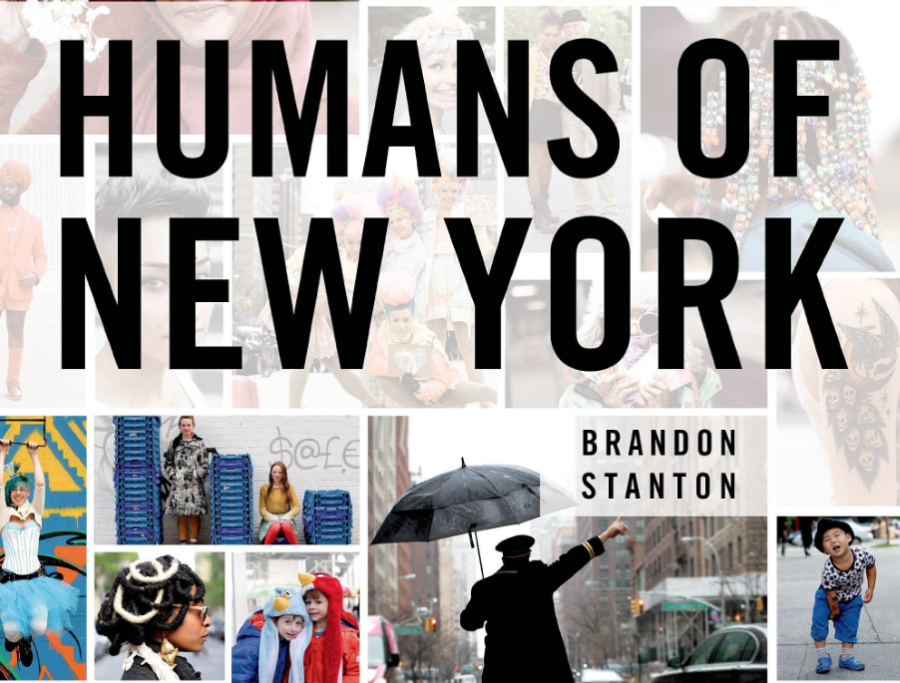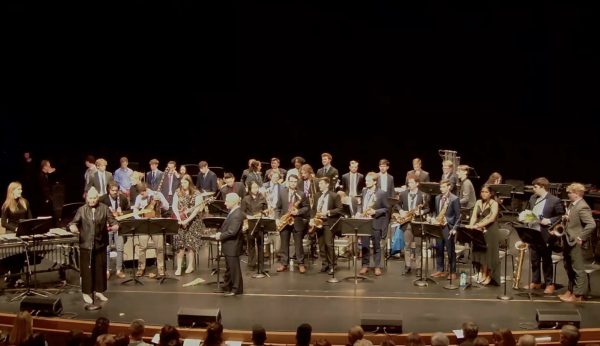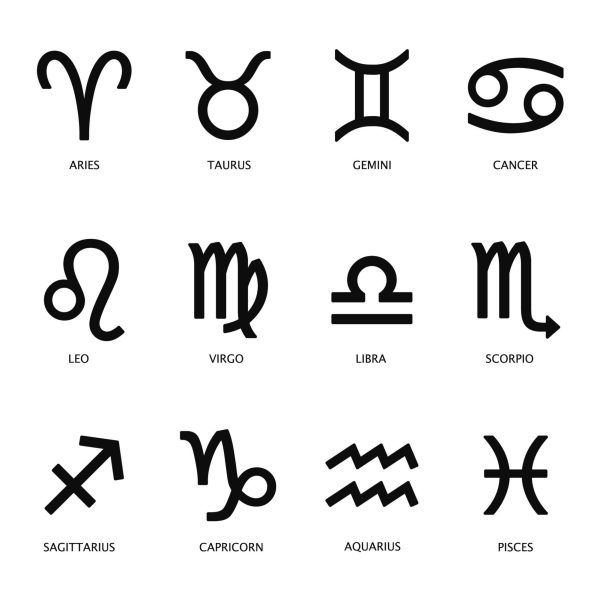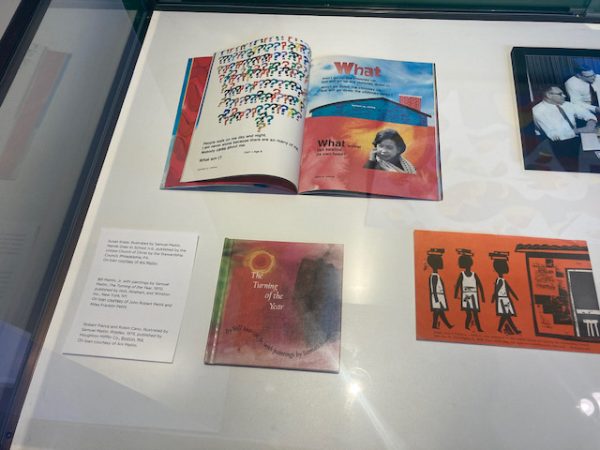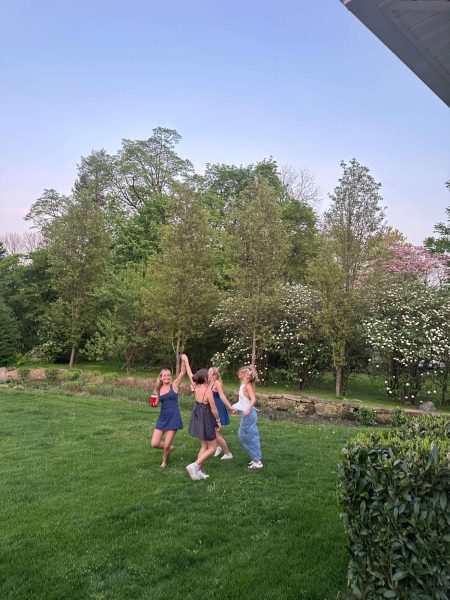Capturing “Humans:” Is a picture worth a thousand words?
February 19, 2015
 If you’ve been on the Internet in the past year, you’ve undoubtedly seen a picture from Humans of New York. Maybe your friend recently shared an inspiring post about a young mother struggling to raise a family, or a son who just lost his father. Maybe you have even reposted a portrait or two that you found particularly moving, or maybe you are one of the 12 million follows on their Facebook page.
If you’ve been on the Internet in the past year, you’ve undoubtedly seen a picture from Humans of New York. Maybe your friend recently shared an inspiring post about a young mother struggling to raise a family, or a son who just lost his father. Maybe you have even reposted a portrait or two that you found particularly moving, or maybe you are one of the 12 million follows on their Facebook page.
The project, started by Brandon Stanton in 2010, is now ubiquitous. Stanton has logged thousands of photographs, accrued millions of followers, published a best-selling book featuring his photos last year and has travelled the world attempting to offer “daily glimpses into the lives of strangers,” according to his website.
And the site has arguably done a lot of good. The portraits and their corresponding bite-sized captions reveal characteristics that appear relatable to most people. Whether it is a picture of a young college graduate struggling to pay off student loans or of an older man going through a divorce, it is easy to say HONY’s main strength is that it connects viewers to other people outside their world. It globalizes human strengths. It magnifies small details of a stranger’s life and makes them seem, for lack of a better word, human.
Stanton has also worked with subjects for philanthropic reasons. He recently partnered with students and teachers from the Mott Hall Bridges Academy and asked viewers of his site to donate money to a scholarship fund for their graduates. In just five days, Stanton helped raise over one million dollars for the school, and that is no small feat.
But despite the overwhelming popularity of the site, critics have raised sharp and insightful objections to HONY. They object to many things, but arguably the most widespread critique of Stanton’s project is its representation of race.
Brianna Cox, a blogger and former HONY follower, described her distaste for the site after a picture was posted last July of a white teacher in Harlem who said a main challenge of his job was that his students did not live in a “culture of expectation” at home. Cox took offense to the subject’s quote, as she believed it perpetuated an incorrect stereotype of black homes and reflected embedded cultural racism. So she spoke out in the comments section and was quickly rebuked.
Other followers were fast to criticize Cox and said that she was “playing the race card.” Cox responded and said she “let her (the commenter) know that someone who is not dismissive of racism would not use the term ‘playing the race card,’ as it implies that in most cases, racism should be dismissed.” Cox attempted to continue the conversation about race and why she believed the subject’s quotation was so offensive, but she was blocked. The next day Stanton made a public post defending the assistants of the site for blocking Cox, saying that criticism of a subject would not be tolerated.
By preventing a relatively non-threatening conversation about race from taking place on HONY’s site, Cox said Stanton was “perpetuating that these parents really are just culturally lazy and do not care about their children’s education” and silencing naysayers from ever speaking up.
This incident is not the only race-based criticism HONY has received. Salon journalist Daniel D’Addario said he hated the site because all of the pictures seemed to “exist to fulfill stereotypes.” To him, the images communicated the same message: people who are racial minorities are allowed to complain about their lot in life, while white people are allowed to brag about their achievements or are portrayed as racial sympathizers. D’Addario claimed that this is not the real New York City. It is a watered down, gentrified version that portrays the city through a white-male lens. “Obviously, the site isn’t journalism,” D’Addario said, “It’s documenting nothing more than Stanton’s own viewpoint.”
Along similar lines, several people criticize HONY for its overwhelming sentimentality. Melissa Smyth, a writer for the magazine Warscapes, believed that the sympathy often felt by a primarily Western audience when viewing a picture is pointless. “[HONY’s] brand of “humanity” requires no scrutiny,” Smyth said, “for it is designed to do what photography’s critics have accused the medium of doing at its worst: to capture, to possess, and to provoke the in the viewer un-processable, useless emotion.”
Smyth’s critique points to the fact that many followers of HONY view these pictures of people struggling against real obstacles–most recently of subjects in Iran–click “like” and feel changed by their action. HONY, Smyth argued, reduces people to an image, a caricature, and negates their whole personhood. Viewers see these images and feel somehow more connected to the “outside” world, perpetuating the stereotype that the Western way of living is somehow normal, and those not in it are deviants from that norm. This sentiment, this pity, is worthless according to Smyth: “Sentimentality offers an escape from the difficult conclusions that must come from honest scrutiny of social reality in the United States.”
Because of its popularity, criticizing HONY and Stanton can seem unproductive, like swiping at the heels of a giant just to watch it stumble. Some think it is useless to carp against a project so large and so well-loved. But if nothing else, these criticisms start important discussions about what it means to portray a group of people through photographs. Is it possible to present these photographs and interviews of people without in some way diminishing them? And is it even the photographer’s responsibility to represent their subject “truthfully,” or will it always be left to the reader to interpret?
For help answering these questions, our own photography project on campus, Humans of Villanova, offers their opinion. The creators of HOVU, who wish to remain anonymous, said that they started the project because “even though Villanova is a small-ish community, there are still so many people that we might not ever interact with or learn about if we don’t step outside of our own circles.” They wanted to combine small stories together to help make a collective “Villanova story.”
Though HOVU does mirror HONY’s format, there are some distinct differences between the two groups. First, Villanova is a much smaller setting that New York City, and arguably has more of a group identity than eight million people living in the same geographic area. Second, the creators of the site want to remain anonymous to have the focus be on the subjects and not on themselves. And lastly, while the pictures are often positive like HONY, the captions are consistently longer than an average HONY caption.
HOVU’s founders explained that at first they attempted to keep the answers short and succinct. But HOVU said that they would often listen to an interview and not know how to cut it down. “We never want to compromise the truth of what people said to us in their exact words,” HOVU said, “so a lot of times we just let the comments be the lengthy responses that you often see featured.” These lengthier captions give a fuller depiction of the subject than just a snippet might, and caption length is a way that HOVU has organically differentiated itself from HONY.
Like HONY, HOVU attempts to capture diversity in their subjects, and they admit this is much harder than it seems. “It’s hard to talk about without sounding hypocritical or silly,” HOVU said, “but the general gist…is that if we notice we have been talking to a lot of people from similar demographics, we’ll look for people who are not a part of that demographic so that we are highlighting all of the voices that make up our community.”
HOVU also noted that often Villanova is stereotyped as “Vanilla-nova” with a “preppy” student body, and while this might be true for some students, it certainly is not true for everyone in the Villanova community. HOVU seeks to highlight those who do not necessarily fit that mold.
Interviewing students about their diversity is also a tricky subject. HOVU said a question that occurs to them often is, “Do we allow them (diverse students) to talk about what makes them ‘different,’ therefore solidifying that categorization as ‘different,’ or do we just ask a run-of-the-mill question that doesn’t teach us anything new?” HOVU is aware of how difficult it is to represent diversity without parsing up subjects into categories solely based on what makes them diverse. But this awareness, something that Stanton seems to lack, allows for the HOVU creators to be more thoughtful and recognize that their own personal viewpoints may affect their portrayals.
To this point, HOVU said, “We are just two college students. We don’t know everything and we suffer from the same single-lensed problem that every other person on this planet faces.” HOVU seems acutely aware of their “lens,” whereas HONY operates under the presumption that their portrayal is unaffected by personal bias and censors discussion about that issue in their comments section. This consciousness combined with the lengthier captions is part of what makes HOVU different, in a positive way, from HONY.
Photographing and attempting to communicate some truth about a group is a double edged sword. The similarities between people is what many believe make us human, and yet those same similarities can reduce a person to nothing more than a symbol- of poverty, of struggle, of perseverance- that cheapens their story and makes it one-dimensional. HOVU accurately summarizes this dichotomy that exists in photography projects like HONY when they ask: “How do you separate the heartwarming feeling that some of those pictures give you from the blatant fact that oftentimes those pictures are also reinforcing stereotypes that we might not even realize we believe in?” It is a puzzle that HOVU works to decipher, one picture at a time.

